Astronomy from the Bottom of Grand Canyon II
I spent last week on a seven-day Grand Canyon raft trip. This was a joint venture between Answers in Genesis and Canyon Ministries. I’ve done the seven-day trip once before and the four-day trip three times. (I blogged about a four-day trip last September.) The theme for my raft trips is “Geology by Day, Astronomy by Night.” For these trips, I bring along a green laser to point out stars and constellations, but I also take a pair of binoculars and the 3.5-inch Questar telescope:

The people on the trip were delighted to see the rings of Saturn through the telescope, but we also viewed globular star cluster M13 and the Ring Nebula (M57) through the telescope as well. I had hoped to take a look at the moon through the telescope later in the week when the moon had waxed, but the monsoon arrived about a week early this year, and cloudy skies in the evening prevented this.
The Milky Way
The naked-eye show-stopper was the Milky Way in the dark skies of the canyon. Apparently, many of the people on the trip had never seen the Milky Way before. One of the rafters, Jeana Caywood, brought along a camera and tripod to take nighttime photos. Here is a great picture of the Milky Way that she took:

This is looking toward the center of the galaxy, where the Milky Way is thickest and most impressive. Near the bottom you may be able to pick out the Teapot, part of the constellation Sagittarius.
One afternoon we were camped on a beach that allowed me to set up the telescope safely to view the sun. There were many large sunspots, larger than I had seen in some time.
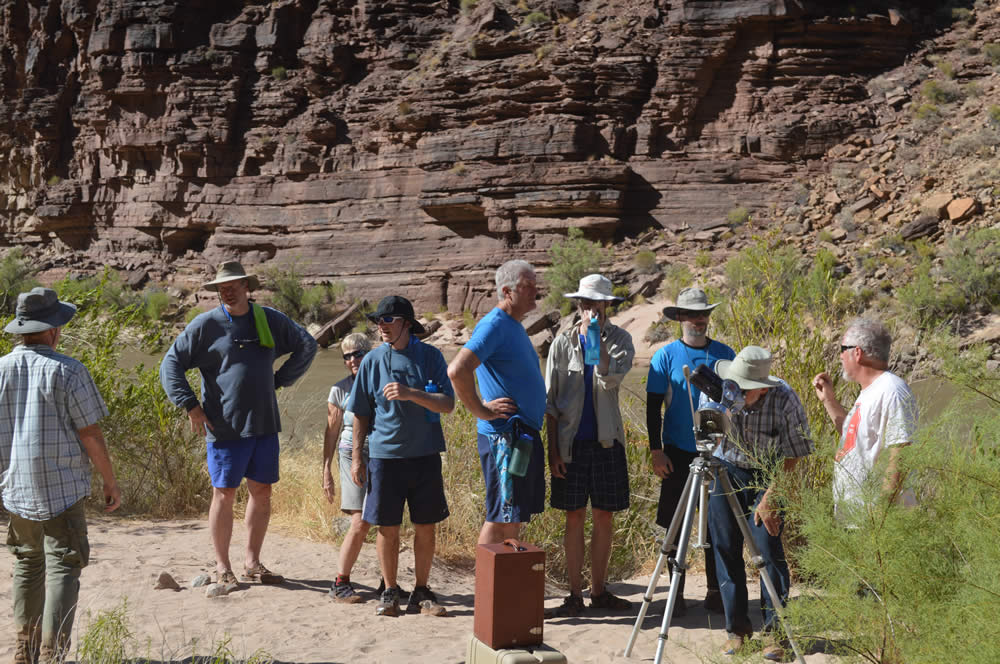
Like Father, Like Son
As with one of my four-day trips last year, my 26-year-old son Seth was able to go along on this trip. Between the four- and seven-day trips, one rafts the entirety of Grand Canyon, so he has seen the whole Canyon now. Here is a photo of the two of us at what perhaps is the most impressive view from within the Canyon. There were three other father-son pairs on the trip as well.
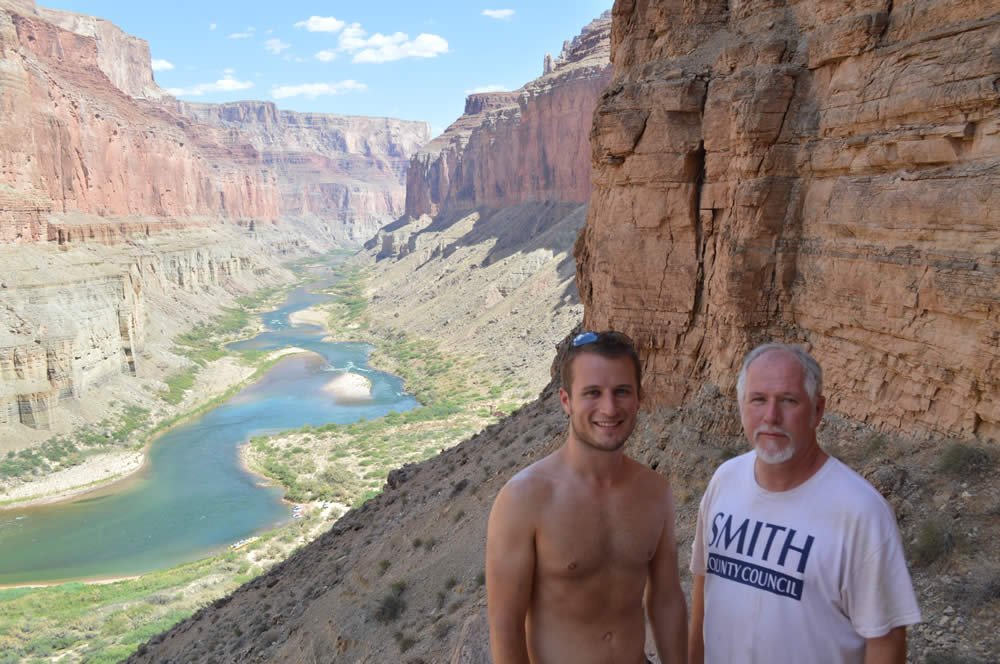
Wonderful Sights, Hikes, and Side Trips
On the trip, we visited several beautiful waterfalls and two sets of Indian ruins. We also hiked into the beautiful blue waters of the Little Colorado River.
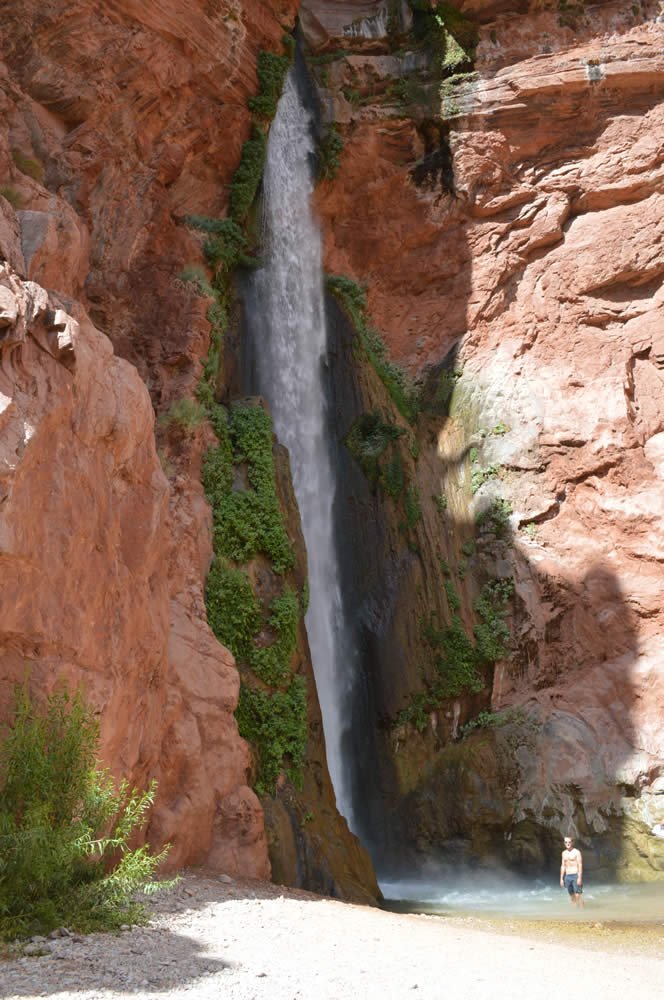
Deer Creek Falls
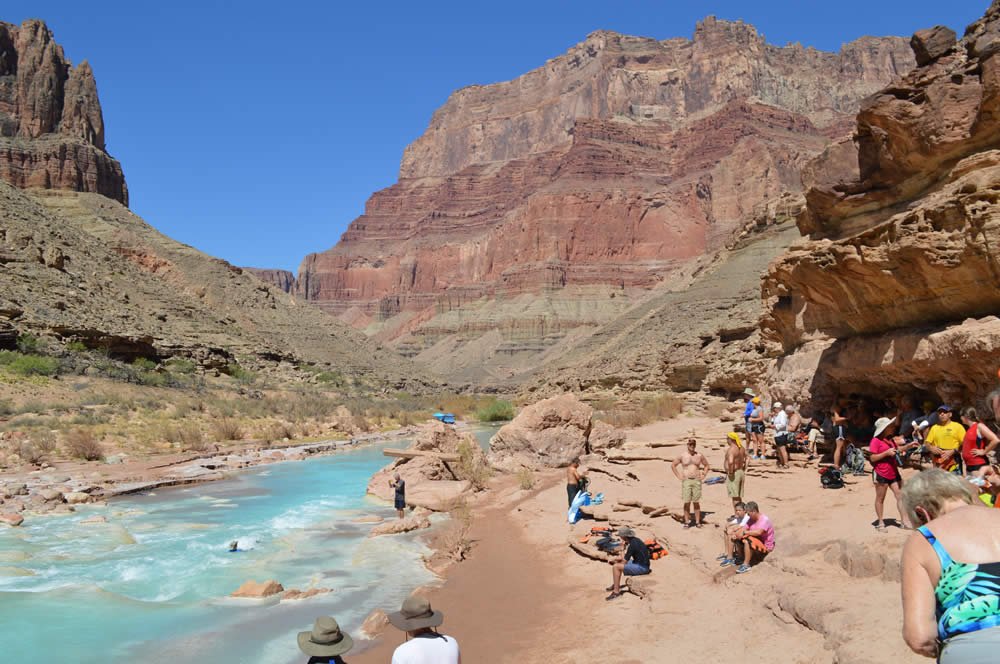
I think that one of the most impressive things in Grand Canyon is Redwall Cavern. From a distance, it doesn’t look that large, but from inside, it is huge. John Wesley Powell, the man who led the first expedition down the Colorado River through Grand Canyon in 1869, estimated that the cavern could hold 50,000 people. One man on our trip paced out the cavern, and we computed the area inside to be about two acres. So we determined that Powell’s estimate of 50,000 people was possible, though it would be tight.
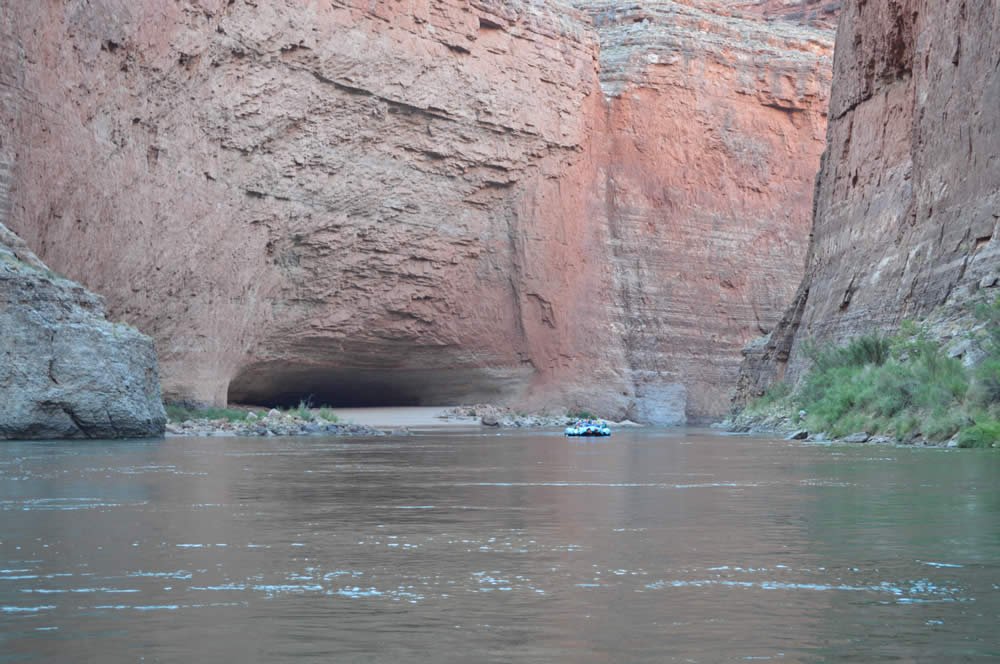

Geology
The geology portion of the trip was led by Jon Albert, executive director of Canyon Ministries. Here you can see Jon giving instruction on the catastrophic origin of Grand Canyon at the lunch stop on the first day of our trip:
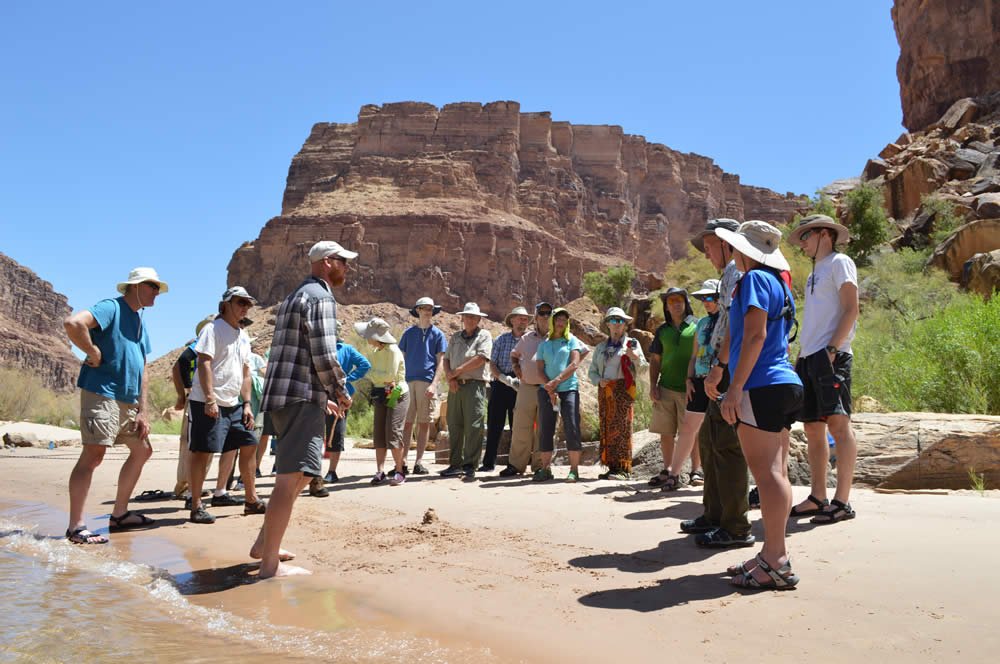
Important in understanding this is the Great Unconformity that is visible in many parts of the Canyon (as in other locations around the world). Here is a photo of Seth and me at the Great Unconformity in a slot canyon off Grand Canyon:
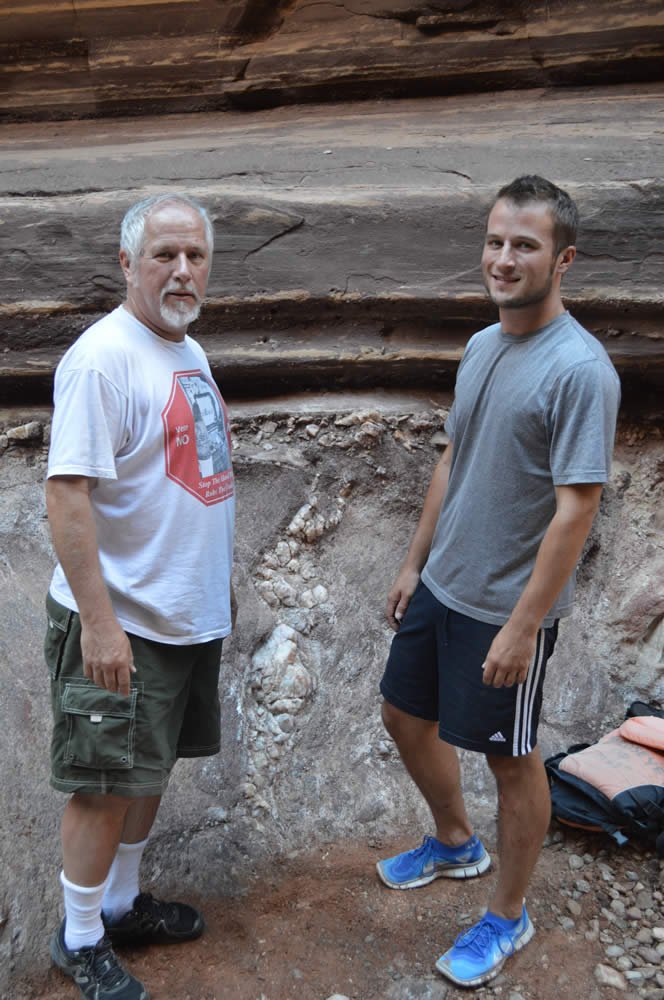
The Great Unconformity is at chest level. Below the Great Unconformity are the basement rocks of Grand Canyon, while above is the Tapeats Sandstone. Many creation geologists think that the basement rocks here may be Day Three creation rocks, while the Tapeats Sandstone may represent the first surge of Flood waters on the land, at least in this location. Elsewhere in the Canyon, there are impressive folds in the Tapeats Sandstone. These folds show no breakage in the rock, which suggests that the Tapeats Sandstone formed rapidly and then folded prior to solidification.

On the trip we also saw many fossils, such as this sponge at Redwall Cavern:


Answers in Genesis is an apologetics ministry, dedicated to helping Christians defend their faith and proclaim the good news of Jesus Christ.
- Customer Service 800.778.3390
- Available Monday–Friday | 9 AM–5 PM ET
- © 2026 Answers in Genesis

